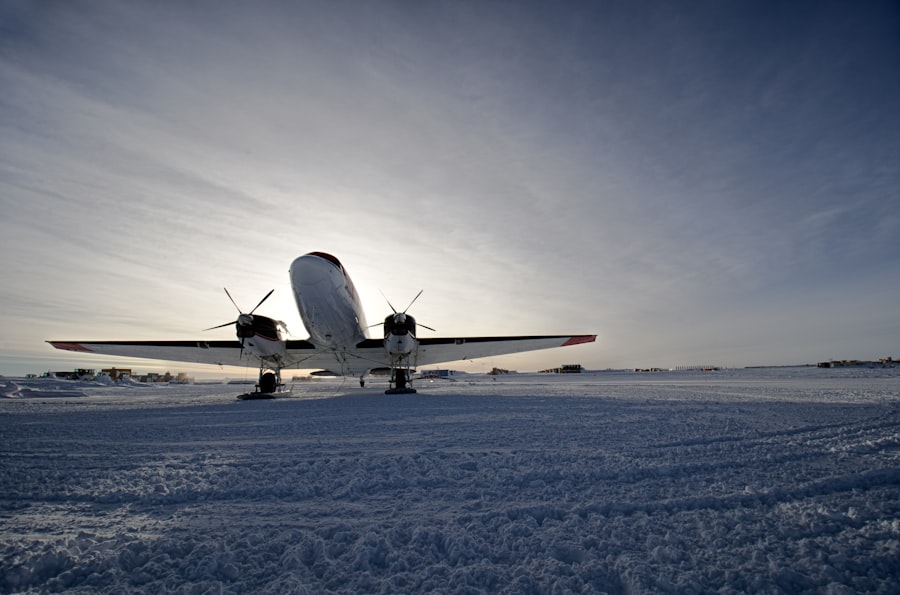The realm of aviation has always been marked by remarkable feats of engineering, but few achievements stand out as prominently as the creation of the largest aircraft in the world. These colossal machines, often referred to as “giant aircraft,” push the boundaries of what is possible in terms of size, capacity, and functionality. The largest aircraft currently recognized is the Antonov An-225 Mriya, a marvel of Soviet engineering that was designed to transport heavy cargo.
With its impressive wingspan and payload capacity, the An-225 has captured the imagination of aviation enthusiasts and professionals alike. Its sheer scale not only serves practical purposes but also symbolizes human ingenuity and ambition in the field of aeronautics. The significance of giant aircraft extends beyond their physical dimensions; they represent a convergence of advanced technology, innovative design, and strategic utility.
As global trade continues to expand and the demand for rapid transportation of goods increases, the role of these massive flying machines becomes ever more critical. The ability to transport oversized cargo, humanitarian aid, or even military equipment across vast distances in a single flight is a game-changer in logistics and supply chain management. This article delves into the history, dimensions, uses, technology, challenges, notable examples, and future prospects of giant aircraft, providing a comprehensive overview of their impact on modern aviation.
Key Takeaways
- The largest aircraft in the world are marvels of engineering and design, pushing the boundaries of what is possible in aviation.
- Giant aircraft have a rich history, with notable examples dating back to the early 20th century and continuing to evolve to this day.
- The dimensions of the largest aircraft are staggering, with wingspans and lengths that far exceed those of conventional planes.
- Giant aircraft have a wide range of uses, from transporting heavy cargo and equipment to serving as airborne launch platforms for space missions.
- The technology behind giant aircraft is constantly advancing, with innovations in materials, propulsion, and aerodynamics driving their development.
The History of Giant Aircraft
The journey toward creating giant aircraft began in the early 20th century when aviation pioneers experimented with larger designs to accommodate more passengers and cargo. However, it was during World War II that the need for larger aircraft became more pronounced. The war necessitated the transport of troops, equipment, and supplies over long distances, leading to the development of several large military transport planes.
One notable example is the Lockheed C-130 Hercules, which was introduced in 1956 and has since become a staple in military logistics due to its versatility and capacity. The Cold War era saw further advancements in aircraft design, particularly with the Soviet Union’s Antonov Design Bureau. In 1988, they unveiled the Antonov An-225 Mriya, originally conceived to transport the Buran space shuttle.
This aircraft was not only a response to the needs of space exploration but also a testament to Soviet engineering prowess. The An-225’s design incorporated cutting-edge technology for its time, including a unique six-engine configuration and an enormous cargo hold capable of accommodating oversized items. Its first flight marked a significant milestone in aviation history, setting records that still stand today.
The Dimensions of the Largest Aircraft

When discussing giant aircraft, one cannot overlook their staggering dimensions. The Antonov An-225 Mriya boasts an overall length of 84 meters (275 feet) and a wingspan of 88.4 meters (290 feet), making it the longest and heaviest aircraft ever built. Its maximum takeoff weight is an astonishing 640 metric tons (1.4 million pounds), allowing it to carry payloads that would be impossible for conventional aircraft.
The cargo hold itself is designed to accommodate items up to 43 meters (141 feet) long and 6.4 meters (21 feet) wide, which opens up possibilities for transporting everything from industrial machinery to entire train cars. In comparison to other large aircraft, such as the Airbus A380 or Boeing 747, the An-225 stands out not only in size but also in its unique design features. The A380, known as the largest passenger aircraft, has a wingspan of 79.7 meters (261 feet) and can carry over 800 passengers in an all-economy configuration.
While it excels in passenger transport, it cannot match the An-225’s cargo capacity or versatility. The sheer scale of these giant aircraft challenges traditional notions of flight and logistics, prompting engineers and designers to rethink how we approach air travel and cargo transport.
The Uses of Giant Aircraft
| Uses of Giant Aircraft | Metrics |
|---|---|
| Passenger Capacity | 500-850 passengers |
| Cargo Capacity | Up to 250 tons |
| Range | 8,000-10,000 nautical miles |
| Wingspan | Up to 80 meters |
| Length | Up to 80 meters |
Giant aircraft serve a multitude of purposes across various sectors, making them invaluable assets in today’s interconnected world. One of their primary functions is heavy cargo transport. Industries such as construction, energy, and aerospace often require the movement of oversized equipment that cannot be easily transported by road or rail.
The An-225 has been employed to transport wind turbine blades, large generators, and even entire locomotives, showcasing its ability to handle extraordinary loads with ease. In addition to commercial applications, giant aircraft play a crucial role in humanitarian efforts. During natural disasters or crises, these aircraft can deliver essential supplies such as food, medicine, and shelter materials to remote or affected areas quickly.
For instance, during the COVID-19 pandemic, the An-225 was utilized to transport medical supplies across continents, demonstrating its adaptability in times of need. Furthermore, military organizations leverage giant aircraft for strategic airlift operations, enabling rapid deployment of troops and equipment to various theaters of operation around the globe.
The Technology Behind Giant Aircraft
The engineering marvels that are giant aircraft are underpinned by sophisticated technology that ensures their performance and safety. The Antonov An-225 Mriya features advanced avionics systems that enhance navigation and control during flight. Its six-engine configuration not only provides substantial thrust but also allows for redundancy; if one engine fails, the aircraft can still operate safely with the remaining engines.
This design consideration is critical for maintaining operational reliability when transporting valuable or sensitive cargo. Moreover, materials science plays a significant role in the construction of giant aircraft. The use of lightweight composite materials helps reduce overall weight while maintaining structural integrity.
This is particularly important for large aircraft where every kilogram saved can translate into increased payload capacity or fuel efficiency. Additionally, advancements in aerodynamics have led to more efficient wing designs that minimize drag and optimize lift during flight. These technological innovations collectively contribute to the operational efficiency and safety of giant aircraft.
Challenges of Operating Giant Aircraft

Despite their impressive capabilities, operating giant aircraft comes with a unique set of challenges that must be addressed by airlines and logistics companies alike. One significant hurdle is airport infrastructure; not all airports are equipped to handle such large machines. The An-225 requires specialized ground support equipment and extensive runway lengths for takeoff and landing.
This limitation can restrict operational flexibility and necessitate careful planning when scheduling flights. Another challenge lies in regulatory compliance and airspace restrictions. Given their size and weight, giant aircraft must adhere to stringent safety regulations that govern their operation.
This includes obtaining special permits for oversized cargo flights and navigating complex air traffic control systems that may not be designed with such large aircraft in mind. Additionally, weather conditions can pose risks; strong winds or severe turbulence can significantly impact flight safety during takeoff and landing phases.
Notable Giant Aircraft in the World
While the Antonov An-225 Mriya holds the title for being the largest aircraft ever built, several other notable giant aircraft have made their mark on aviation history. The Airbus A380 is renowned as the largest passenger airliner globally, capable of carrying over 800 passengers in an all-economy configuration or around 500 in a typical three-class layout. Its double-deck design revolutionized air travel by allowing airlines to maximize capacity on popular routes.
Another significant entry is the Lockheed Martin LM-100J Super Hercules, a civilian variant of the C-130 Hercules military transport aircraft. While not as large as the An-225 or A380, it exemplifies versatility in cargo transport with its ability to operate from short runways and rugged terrain. Additionally, it can be configured for various missions ranging from firefighting to medical evacuation.
The Future of Giant Aircraft
As we look ahead to the future of aviation, giant aircraft are poised to evolve further in response to changing demands and technological advancements. The increasing globalization of trade will likely drive continued interest in large cargo planes capable of transporting oversized goods efficiently across long distances. Innovations in sustainable aviation fuel and electric propulsion systems may also influence the design and operation of future giant aircraft, aligning with global efforts to reduce carbon emissions.
Moreover, advancements in automation and artificial intelligence could enhance operational efficiency by optimizing flight paths and improving maintenance schedules for these massive machines. As airports adapt to accommodate larger aircraft and regulatory frameworks evolve to support their operation safely, we may witness a new era where giant aircraft become even more integral to global logistics networks and humanitarian efforts. In conclusion, giant aircraft represent a fascinating intersection of engineering prowess and practical utility within modern aviation.
Their history reflects humanity’s relentless pursuit of innovation while their dimensions challenge our understanding of flight capabilities. As technology continues to advance and global needs evolve, these colossal machines will undoubtedly play an essential role in shaping the future of air transportation.


